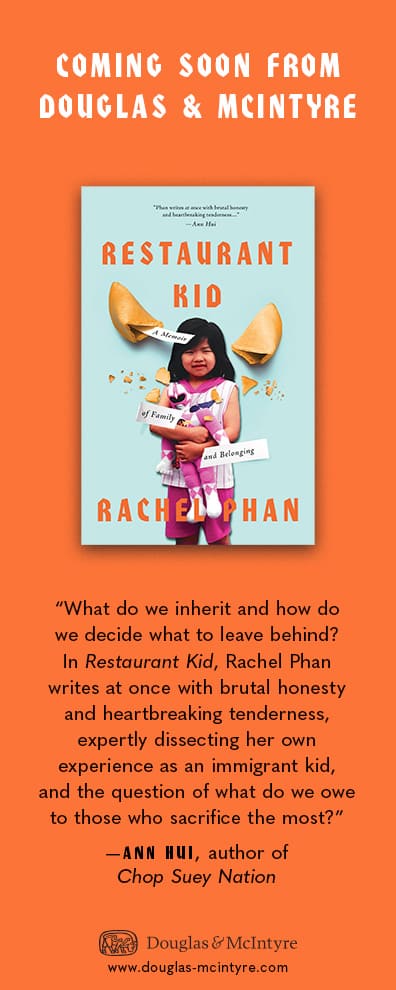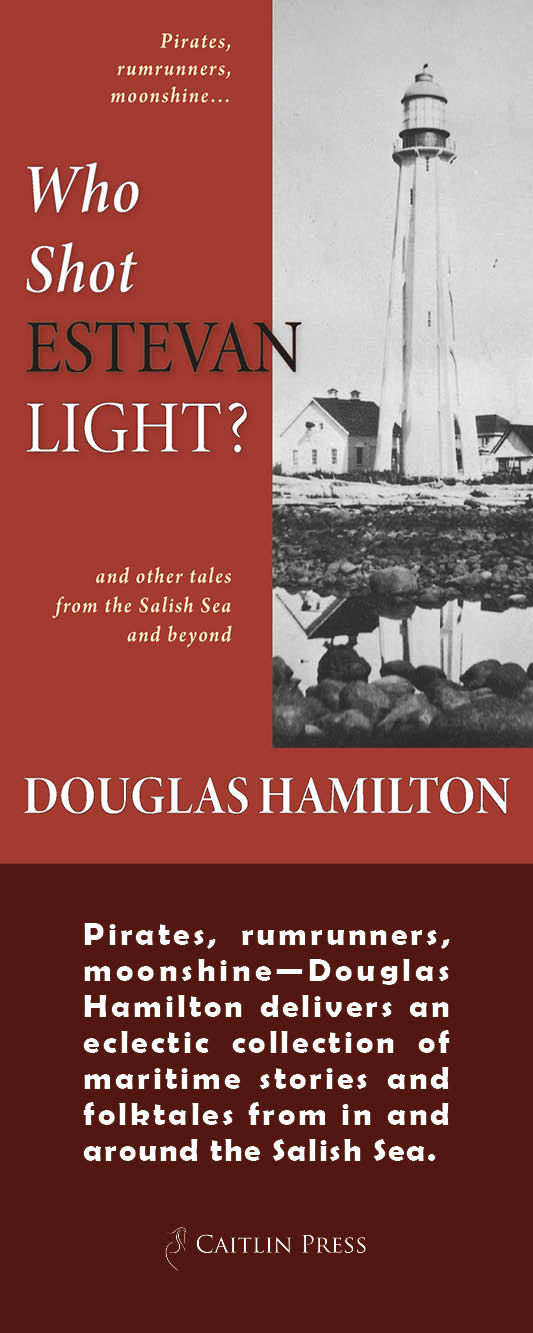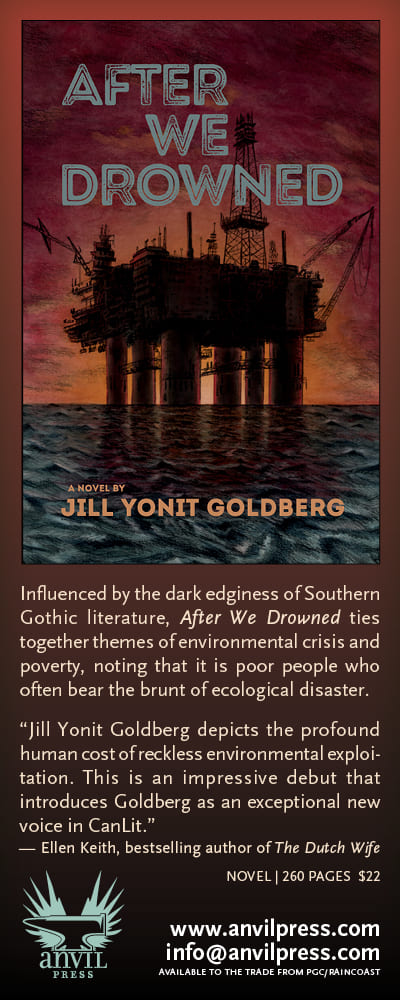#740 Bocce Ball & colonialism
On This Patch of Grass: City Parks on Occupied Land
by Daisy Couture, Sadie Couture, Selena Couture, & Matt Hern, with a foreword by Denise Ferreira da Silva, a forward! by Glen Coulthard, & illustrations by Erick Villagomez
Black Point, NS, and Winnipeg, MB: Fernwood Publishing, 2018
$30.00 / 9781773630700
Reviewed by Marina La Salle
*
 On this Patch of Grass is a mosaic of approaches to and perspectives on one small park in East Vancouver. Known locally as Bocce Ball Park and formally as Victoria Park, the site is a focal point for neighbouring residents where, at any time of day, one might encounter “grizzled bocce ball players shouting and gambling, hipsters doing hipster things, dog-walkers, kids of all ages, a Latinx harm-reduction group, parents and caregivers, readers, drinkers, drug users, guitar players, soccer players, youth camps, meetings and people sleeping in the sun and overnight. In most ways though, it is a totally unremarkable park” (pp. 6-7).
On this Patch of Grass is a mosaic of approaches to and perspectives on one small park in East Vancouver. Known locally as Bocce Ball Park and formally as Victoria Park, the site is a focal point for neighbouring residents where, at any time of day, one might encounter “grizzled bocce ball players shouting and gambling, hipsters doing hipster things, dog-walkers, kids of all ages, a Latinx harm-reduction group, parents and caregivers, readers, drinkers, drug users, guitar players, soccer players, youth camps, meetings and people sleeping in the sun and overnight. In most ways though, it is a totally unremarkable park” (pp. 6-7).
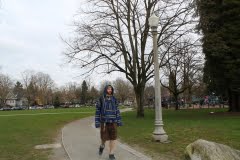 Perhaps because of its unremarkableness, Victoria Park serves as an ideal place and platform to bring to light some of society’s nondiscussables — the topics we all know about but usually avoid. Raising these uncomfortable and sometimes taboo subjects is precisely the aim of this book, which provides “a close portrait of Bocce Ball Park as a narrative thread and case study, as a route to talking about the occupation of land and especially parks” (p. 6) in colonized Canada.
Perhaps because of its unremarkableness, Victoria Park serves as an ideal place and platform to bring to light some of society’s nondiscussables — the topics we all know about but usually avoid. Raising these uncomfortable and sometimes taboo subjects is precisely the aim of this book, which provides “a close portrait of Bocce Ball Park as a narrative thread and case study, as a route to talking about the occupation of land and especially parks” (p. 6) in colonized Canada.
 The book includes seven sections with textual and visual material produced by seven people. The four main authors are a white settler family of mother, father, and two daughters who lived for many years near Victoria Park. Couched within foreword and epilogue commentaries written by professors at the University of British Columbia, the five central chapters address “what parks do — how they behave and how they are deployed in cities” (p. 2) as part of colonial government apparatus. Four threads weave throughout the chapters: the uses and histories of parks, parks as expressions of control and domination, the establishment of parks as part of settler occupation, and the pressing question of how to “eschew simple narratives of reconciliation and contribute to restitution” (p. 9).
The book includes seven sections with textual and visual material produced by seven people. The four main authors are a white settler family of mother, father, and two daughters who lived for many years near Victoria Park. Couched within foreword and epilogue commentaries written by professors at the University of British Columbia, the five central chapters address “what parks do — how they behave and how they are deployed in cities” (p. 2) as part of colonial government apparatus. Four threads weave throughout the chapters: the uses and histories of parks, parks as expressions of control and domination, the establishment of parks as part of settler occupation, and the pressing question of how to “eschew simple narratives of reconciliation and contribute to restitution” (p. 9).
 After providing background on the project and the family’s ties to Victoria Park and the Commercial Drive neighbourhood of East Vancouver, Chapter 2 addresses the history and conceptualization of parks in general, comparing Bocce Ball Park with these models. Parks are discussed in relation to both the European tradition of elaborately organized gardens and to a perceived need for “green space” following the industrial revolution. Always framed by conventions supporting the established social order and what is deemed appropriate behaviour, parks are analyzed in terms of social power: who gets to make decisions, how they get their authority as decision-makers, what those decisions are, and the impacts they have on everyone else.
After providing background on the project and the family’s ties to Victoria Park and the Commercial Drive neighbourhood of East Vancouver, Chapter 2 addresses the history and conceptualization of parks in general, comparing Bocce Ball Park with these models. Parks are discussed in relation to both the European tradition of elaborately organized gardens and to a perceived need for “green space” following the industrial revolution. Always framed by conventions supporting the established social order and what is deemed appropriate behaviour, parks are analyzed in terms of social power: who gets to make decisions, how they get their authority as decision-makers, what those decisions are, and the impacts they have on everyone else.
 This chapter does well to illustrate how, in parks, “[t]he kinds of people, behaviour, plants and animals that are permitted are not ‘natural’ in any sense: they are social decisions, made for particularly, and often strangely contradictory, reasons” (p. 36):
This chapter does well to illustrate how, in parks, “[t]he kinds of people, behaviour, plants and animals that are permitted are not ‘natural’ in any sense: they are social decisions, made for particularly, and often strangely contradictory, reasons” (p. 36):
All parks … extol and encourage certain kinds of behaviour (sightseeing, hiking, tent camping, canoeing) while severely restricting and punishing other kinds (hunting, fishing, trapping, fish camps). These distinctions are not random: they are colonial ordering mechanisms, annexing Indigenous territory, and then despite claims to commonality and to “benefitting all people,” denying Indigenous people access to their traditional practices. In that, parks are deployed as one more tool for genocide, and Boccee Ball Park, despite its modest size and ambition, contributes to that work. But it doesn’t have to (pp. 42-43).
 This chapter is followed by a photo essay of Victoria Park featuring twenty-two images taken from the same location and with the same view over the course of a year. Images depict the diverse range of people and activities touched on by all authors in this text, and are only a sample from a year-long photography project, the rest of the images being available online.
This chapter is followed by a photo essay of Victoria Park featuring twenty-two images taken from the same location and with the same view over the course of a year. Images depict the diverse range of people and activities touched on by all authors in this text, and are only a sample from a year-long photography project, the rest of the images being available online.
The next author presents a series of narratives collected as an oral history project with some of the “park goers.” These stories are rich with detail and provide a glimpse into the many behaviours seen in Victoria Park, illustrating how perspective shapes perception: a child who regularly visits the playground may love the park, and a woman who regularly experiences sexual harassment there may disdain it. These accounts also hint at the broader context of this neighbourhood, the people who live in and visit it, the businesses and community groups there, and the changes people continue to witness in the character of the area.
 The final chapter traces the history of land tenure at Victoria Park as a means to “historicize the land that became the park and the process through which city dwellers continue to feel entitled to this unceded land for their use and pleasure” (pp. 117-118). This archive-based biographical review ties together central political figures, founding corporations such as the Hudson’s Bay Company and Canadian Pacific Railway, and the Vancouver elite with the development of the colony of British Columbia and its ongoing refusal to engage ethically and legally with Indigenous communities whose Title remains unceded. Victoria Park is one of many outcomes of this history and its interwoven relationships, and this chapter effectively explains the process of “settler colonial land theft” (p. 115) and the importance of “unsettling.”
The final chapter traces the history of land tenure at Victoria Park as a means to “historicize the land that became the park and the process through which city dwellers continue to feel entitled to this unceded land for their use and pleasure” (pp. 117-118). This archive-based biographical review ties together central political figures, founding corporations such as the Hudson’s Bay Company and Canadian Pacific Railway, and the Vancouver elite with the development of the colony of British Columbia and its ongoing refusal to engage ethically and legally with Indigenous communities whose Title remains unceded. Victoria Park is one of many outcomes of this history and its interwoven relationships, and this chapter effectively explains the process of “settler colonial land theft” (p. 115) and the importance of “unsettling.”
 Together, these chapters present an interesting and engaging case study on the layers of meaning sedimented in a place where myriad publics interact on a daily basis. The strength of the text is in its personal, narrative style, which creates a very relatable feel and walks readers alongside the author’ path of introspection. In this way, “[t]his project speaks directly and frankly to settlers like us: how can we disavow the colonial attitudes that stain all our thinking about land? And how can we simultaneously embrace the good, durable and ineffable communities that have formed on these lands?” (p. 5).
Together, these chapters present an interesting and engaging case study on the layers of meaning sedimented in a place where myriad publics interact on a daily basis. The strength of the text is in its personal, narrative style, which creates a very relatable feel and walks readers alongside the author’ path of introspection. In this way, “[t]his project speaks directly and frankly to settlers like us: how can we disavow the colonial attitudes that stain all our thinking about land? And how can we simultaneously embrace the good, durable and ineffable communities that have formed on these lands?” (p. 5).
 Yet, I also felt uncomfortable with this approach because of my own connection to the place and subject matter. I grew up on Commercial Drive in the days before it was known as “the Drive,” and I lived a couple of blocks from Victoria Park while completing graduate work at UBC. I used to walk by this park — by, not through, because of the harassment, garbage, human and dog waste, needles and loud screaming children, that result from having a place where people assume “they should be allowed to do their thing” (p. 6) and therefore “can get away with things” they wouldn’t try elsewhere (p. 8). This hard reality of public space is touched on by the authors but, overall, I could not escape a sense of idealism and nostalgia prevalent in “this family’s love letter to this city and its ancestral custodians and colonial residents (settlers)” (p. ix).
Yet, I also felt uncomfortable with this approach because of my own connection to the place and subject matter. I grew up on Commercial Drive in the days before it was known as “the Drive,” and I lived a couple of blocks from Victoria Park while completing graduate work at UBC. I used to walk by this park — by, not through, because of the harassment, garbage, human and dog waste, needles and loud screaming children, that result from having a place where people assume “they should be allowed to do their thing” (p. 6) and therefore “can get away with things” they wouldn’t try elsewhere (p. 8). This hard reality of public space is touched on by the authors but, overall, I could not escape a sense of idealism and nostalgia prevalent in “this family’s love letter to this city and its ancestral custodians and colonial residents (settlers)” (p. ix).
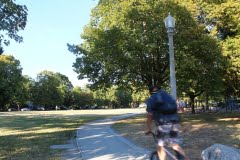 I was also struck by the lack of reference to existing literature around parks and public spaces; particularly absent were some very local examples of park studies, such as Jean Barman’s work on Stanley Park and my own dissertation on Pacific Spirit Regional Park, focused on parks and colonialism/capitalism. This left me with the impression that little research was done to consider what role a book like this might serve and how it fits in with or challenges existing ideas. On this Patch of Grass is therefore not a scholarly academic text per se because it does not engage with or cite those bodies of work, but neither is it simply a book for broad public consumption as some of the language is prohibitive and left unexplained (e.g., “rationalities of whiteness and colonial ordering,” p. 21).
I was also struck by the lack of reference to existing literature around parks and public spaces; particularly absent were some very local examples of park studies, such as Jean Barman’s work on Stanley Park and my own dissertation on Pacific Spirit Regional Park, focused on parks and colonialism/capitalism. This left me with the impression that little research was done to consider what role a book like this might serve and how it fits in with or challenges existing ideas. On this Patch of Grass is therefore not a scholarly academic text per se because it does not engage with or cite those bodies of work, but neither is it simply a book for broad public consumption as some of the language is prohibitive and left unexplained (e.g., “rationalities of whiteness and colonial ordering,” p. 21).
 While reading, I was challenged by chapters that each present their own approach and perspective with very little integration or synthesis between them. Yet, in retrospect, this seems appropriate and symbolic of the park itself as a place of friction and contradiction. In the end, I like On this Patch of Grass, and see the book as a great case study for an undergraduate class, where terms and ideas are further explored in other works on public space, parks, colonization, and Indigenous resistance, ultimately situating one family’s experiences in the broader social and historical context.
While reading, I was challenged by chapters that each present their own approach and perspective with very little integration or synthesis between them. Yet, in retrospect, this seems appropriate and symbolic of the park itself as a place of friction and contradiction. In the end, I like On this Patch of Grass, and see the book as a great case study for an undergraduate class, where terms and ideas are further explored in other works on public space, parks, colonization, and Indigenous resistance, ultimately situating one family’s experiences in the broader social and historical context.
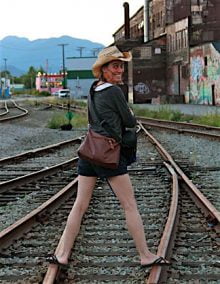


*

Reviewer Marina La Salle is a Professor in Anthropology at Vancouver Island University in Nanaimo and Chair of their Research Ethics Board. Her dissertation, completed at the University of British Columbia, examined the ideological role of Pacific Spirit Regional Park as “nature,” a concept used to forget the social and environmental violence perpetuated via colonialism and industrial capitalism. Marina teaches courses on archaeology, anthropology, and Northwest Coast Indigenous heritage and has written extensively about the ethics, politics, and philosophy of archaeology in colonized contexts such as Canada.
*
The Ormsby Review. More Books. More Reviews. More Often.
Publisher and Editor: Richard Mackie
The Ormsby Review is a journal service for serious coverage of B.C. books and authors, hosted by Simon Fraser University. The Advisory Board consists of Jean Barman, Robin Fisher, Cole Harris, Wade Davis, Hugh Johnston, Patricia Roy, David Stouck, and Graeme Wynn. Scholarly Patron: SFU Graduate Liberal Studies. Honorary Patron: Yosef Wosk. Provincial Government Patron since September 2018: Creative BC
“Only connect.” – E.M. Forster








